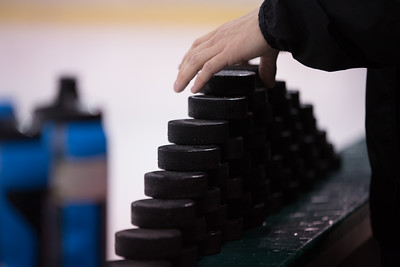TRAVERSE CITY, Mich. — Stu Barnes is looking forward to being behind an NHL bench again.
He’s excited to work with the talent the Dallas Stars have assembled this summer, and since he was hired in late June he’s been working with new (and old) head Ken Hitchcock to prepare for the 2017-18 season.
“It’s been fun,” Barnes said. “We put in a lot of hard work this season. And I think just like the players, we’re ready to get started.”
Barnes, who previously served as a Stars assistant coach from 2008 to 2011, is going to take take over as the architect of the Stars power play, which needs to be revived after a disappointing showing last season.
During the 2016-17 season the Stars converted on 17.9 percent of their power plays, 20th in the league. They also allowed 11 shorthanded goals, one better than the New Jersey Devils for 30th in the league.
For a team with Dallas’ power play personnel that’s unacceptable.
The players now it. Hitchcock knows it. Management knows it.
“You have to be better on special teams,” Stars general manager Jim Nill said. “That’s always been true in our games. But with how close and tight the league has become, the teams that don’t take advantage of those opportunities can get left behind.”
So Barnes is getting a chance to re-design the man advantage. While he had a six-year hiatus from NHL coaching, he’s paid close attention to power play systems used in the league and has never been far removed from the rink as part owner of the WHL’s Tri-City Americans.
As Hitchcock put it, Barnes has a “good hockey mind.” And with the likes of Jamie Benn, Tyler Seguin, Alexander Radulov, plus a cast of strong puck-moving defenders, Barnes has a nice canvas to draw up power play success.
The Xs and Os haven’t been locked in, but Barnes says it starts with having the right mentality right out of training camp.
“I think the trends and some of the strategy has changed and adjusted over the years. But I think the biggest thing for me is it’s a mentality your group has to have. You look at as an opportunity to make a difference in game,” Barnes said. “Whether it’s positive or negative. When you go out and execute well and the players take pride in it, even if you don’t score it makes a difference.”
“Obviously the ultimate goal is to score. But even if you don’t score, you’ve got momentum. You’ve got the other team on their heels, and you get back to five-on-five and you roll from there,” Barnes added. “Obviously the No. 1 thing is to score and it’s an opportunity for your top players to show what they’ve got a make a difference in a game.”
Barnes wants to give players creativity within structure. He said elite players need to be given some freedom to create plays, but there needs to be a better system in place for controlling the puck after Dallas has conceded 26 shorthanded goals goals — by far worst in the league — the past two seasons.
“That’s a focus, you have to eliminate mistakes like that,” he said. “I think that comes down to having everyone on the same page. When your teammate does this, where should you be? Things along those lines.”
The Stars will also take advantage of the size they added this summer. Martin Hanzal and his 6-foot-6 frame will likely take up residence in front of the net. Radek Faksa (6-foot-3) could play a similar role on the power play, meaning opposing goalies will likely have a difficult time seeing through traffic.
“It all comes down to getting pucks on net and getting traffic around the net,” Barnes said. “Players are very engaged and we’ll get it to where we want it to be.”
And what about the zone entries? Will the Stars still be using the drop pass?
“I think it’s very effective, but you’ve got to be careful to not only do that,” Barnes said. “You’ve got to have other wrinkles, and we will do just that.”

Leave a Reply
You must be logged in to post a comment.